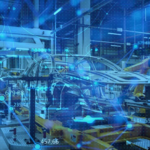Introduction
Artificial Intelligence (AI) is transforming the landscape of modern automation, driving efficiency, innovation, and productivity across various industries. As businesses strive to stay competitive in an increasingly digital world, AI-powered automation is becoming indispensable. This blog delves into the role of AI in modern automation, supported by data, statistics, and real-world applications.
The Rise of AI in Automation
AI, encompassing machine learning (ML), natural language processing (NLP), and computer vision, is at the forefront of the automation revolution. According to a report by McKinsey, AI could potentially deliver up to $13 trillion in additional global economic activity by 2030, boosting global GDP by about 1.2% annually.
Pros and Cons of Artificial Intelligence Integration
Pros
- Increased personalization: it analyses vast amounts of data to deliver personalized experience to the user and includes personalized recommendations for its customers or employees.
- Enhanced Efficiency: ai can identify different bottlenecks which leads to optimized workflow and smooth user experience.
- Improved Decision Making: improved decision-making through AI-driven analytics enables real-time insights.
Cons
- Job Displacement: While AI creates new jobs, it also automates existing jobs that may substantially displace jobs in some areas.
- Bias and Fairness: There has been a realization that AI algorithms, more so Deep Learning-based ones, trained on biased data perpetuate the bias into their outputs.
- Security and Privacy Concerns: Integration of AI would have to come with great concerns toward data security and privacy.
Maximize Your Return
Implementing AI in automation not only cuts operational costs but also delivers substantial returns on investment (ROI). According to a survey by Deloitte, companies leveraging AI technologies in their business processes have seen an average cost reduction of 22% and a revenue increase of 17%. Additionally, the International Data Corporation (IDC) predicts that worldwide spending on AI systems will reach $97.9 billion in 2023, more than 2.5 times the spending level of 2019.
Use Cases
1. Manufacturing.
- Quality control: AI-powered vision systems can inspect products with accuracy of over 99% at times. This is much beyond what a human could do.
- Robot-assisted manufacturing: Powered by the application of AI, collaborative robots are expected to create a global market worth over $22 billion by 2025, showcasing their expanding importance.
2. Supply Chain Management
- Demand forecasting: AI algorithms will increase demand forecasts accurately by up to 20%, which, in turn, will translate into optimized inventory management at reduced costs.
- Automated warehouse systems: Warehouses leveraging AI-powered robots are likely to increase their picking and packing efficiency by 20%, hence improving productivity and increasing the speed of fulfilment. (Source: https://www.linkedin.com/company/automated-warehouse.)
3. Customer Service
- Chatbots and virtual assistants: By 2026, chatbots will constitute about 90% of regular customer enquiries, freeing human operators to handle more complex issues (Source: https://backlinko.com/social-media-marketing-stats).
- Sentiment analysis: Artificial intelligence can capture customer feedback with an accuracy of as high as 80% in detecting sentiment and giving corresponding meaningful insights for better customer service.
4. Finance and Security
- Fraud detection: AI can detect fraudulent financial transactions with an accuracy of up to 95%, hence reducing the losses for financial institutions (Source: https://towardsdatascience.com/tagged/fraud-detection).
- Risk Assessment: Artificial intelligence could use loan applications to reduce time in the assessment process by as much as 70% and perform an accurate risk assessment. Cybersecurity : Real-time network traffic analysis can be carried out by AI. Some of the systems detect as many as 99% of cyber-attacks.
5. Healthcare Medical Diagnosis
AI algorithms can help doctors diagnose diseases with sometimes even 90% accuracy, hence providing patients with earlier and more effective treatment. (Sources: https://med.stanford.edu/healthcare-ai.html.)
The Economic Impact of Automation – Modern Automation
Positive Impacts
- Increased Productivity
- Improved Working Conditions
- New Job Opportunities
- Improved Customer Service
- Better Decision Making
Negative Impacts
- Workforce Reduction
- Job Displacement
- Income Inequality
- Dependence on Technology
- Disruption in communities
Technology users: Then and Now – Modern Automation
Earlier Times
- Limited access: It is where technology remained a luxury and, in most cases, found within specific places like universities or huge companies.
- Specialized Users: Ones that attended to the use of technology were few experts or enthusiasts who used to have a deep understanding of how technology works.
- Basic Functions: The computers were primarily used for calculations and data processing; end-user applications in everyday life were pretty negligible.
- Digital Divide: A great divide between the ‘haves’ and the ‘have-nots’ of technology.
Today
- Ubiquitous Access: Technology is everywhere, from our pocketed smartphones to the computers sitting in our homes.
- Diverse Users: Technology is used every day by all walks of people, ranging from children to seniors.
- Variety of applications: The technology is used in everything ranging from communication and entertainment to work and education.
- Digital Literacy: Not everyone needs to be a computer genius, but digital literacy is slowly becoming a requirement in everyday life.
Workforce Transformation – Modern Automation
AI is reshaping the workforce, augmenting human capabilities rather than replacing jobs. The World Economic Forum’s Future of Jobs Report 2020 estimates that by 2025, AI will create 97 million new jobs while displacing 85 million, resulting in a net gain of 12 million jobs. AI-powered tools are enabling employees to focus on more strategic, creative, and value-added tasks, enhancing overall job satisfaction and productivity.
AI’s Impact on Key Sectors
- Manufacturing: AI-driven robotics and Modern Automation are revolutionizing production lines. Autonomous robots can perform repetitive tasks with precision, while AI algorithms optimize supply chain management and logistics. For instance, Siemens uses AI to improve production processes and has reported a 20% increase in production efficiency.
- Healthcare: AI is automating administrative tasks, such as patient scheduling and billing, allowing healthcare professionals to focus on patient care. Additionally, AI algorithms assist in diagnostics by analyzing medical images with an accuracy rate of up to 95%, surpassing human radiologists in certain cases.
- Finance: AI automates fraud detection, risk assessment, and customer service through chatbots. JPMorgan’s COIN (Contract Intelligence) platform, which uses NLP to review legal documents, has saved the company over 360,000 hours of manual work annually.
- Retail: AI enhances customer experiences through personalized recommendations and automated inventory management. Amazon’s use of AI for demand forecasting has resulted in a 25% reduction in inventory costs.
Challenges and Considerations
Despite its advantages, integrating AI into automation poses challenges. Data privacy, algorithmic bias, and the need for significant investment in technology and training are key considerations. Ensuring ethical AI practices and addressing these challenges is crucial for sustainable and responsible AI deployment.
Conclusion
AI and Modern Automation are powerful forces that will set the course of the future. By recognizing their advantages along with challenges, we can empower an innovative, prosperous, and inclusive world for a richer job market.










